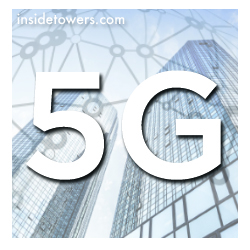5G conspiracy theories lit up social media this year linking the new technology to the spread of COVID-19. As with most myths that spiral out through each retelling of a story, facts become muddled in the mire of the rumor mill and lose their footing.
HighSpeedInternet.com (HSI), an online portal providing consumers insights on internet providers, recently conducted a study of 1,000 Americans to find out what they believed about today’s latest technologies. Published this week in an industry exclusive article, HSI concluded the following:
25 percent of respondents believe 5G cell towers cause radioactive illness. According to experts interviewed by HSI, the lack of knowledge about varying radiation technology types and the focus of 5G signals has led to the overall hype.
“5G is a non-ionizing RF radiation, which is not strong enough to make humans sick,” said Pratik Jain, Author of 5Gversus4G.com. “So, 5G towers with their weak non-ionizing radiations are not the same as ionizing radiation from nuclear energy that can cause burns and severe genetic damage.”
Further down the rabbit hole of 5G misconceptions is that 17 percent of responders believe that “5GE” internet is 5G. HSI concluded this theory likely evolved from 5G Evolution marketing efforts by AT&T and the new 5G icon popping up on its customers’ cell phones. The National Advertising Review Board has since told AT&T to halt 5G Evolution marketing, but the little 5GE phone icon is still displayed on 5GE compatible phones.
Turning toward the stars and skies and satellites (oh my), 33 percent of HSI’s survey respondents believe low-Earth orbit satellites, like Starlink, will block the human view of the stars. 36 percent also believe those same satellites will block astronomer views.
Mark Harrison, CTO of WerAreWe, told HSI, “Do low-orbit satellites ruin the view of the night sky? For a home astronomer lying in a hammock looking up, hoping to see a meteor somewhere—no. For a professional astronomer, trying to survey the galaxies—a bit. A much bigger issue is ‘light of cities reflecting off clouds,’ which is why astronomers try to build in very remote areas, or just use data feeds from telescopes that are out in space already, like NASA’s Hubble.”
In conclusion, Joe Flanagan, Lead App Developer at GetSongBPM likened technology myths to viruses. Flanagan said, “Advertisements often pop up with data that is unreal, yet people fall for the clickbait—and ultimately end up believing the myths that they are told.”





Reader Interactions